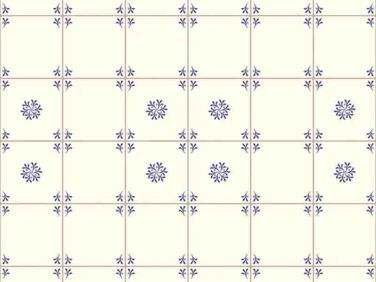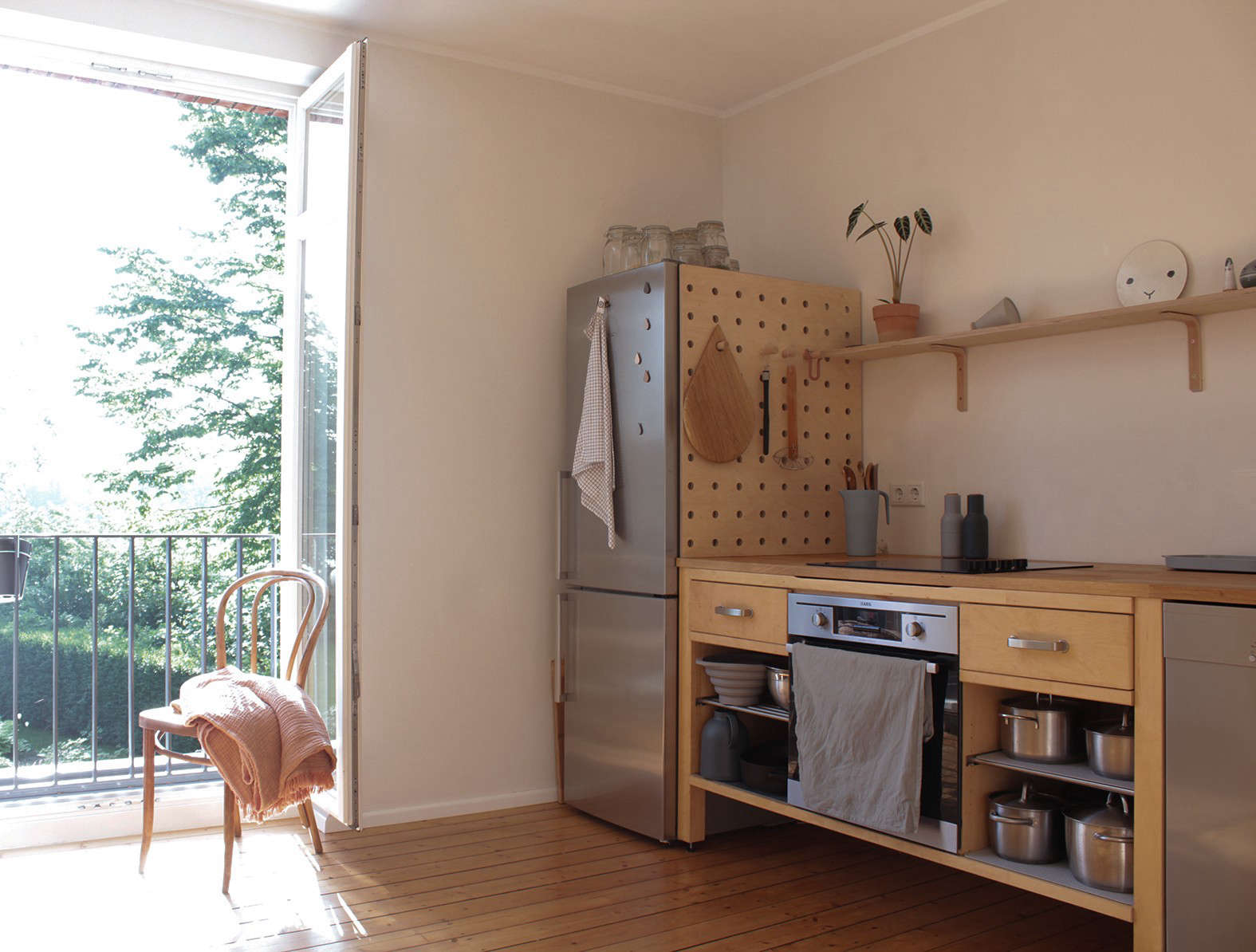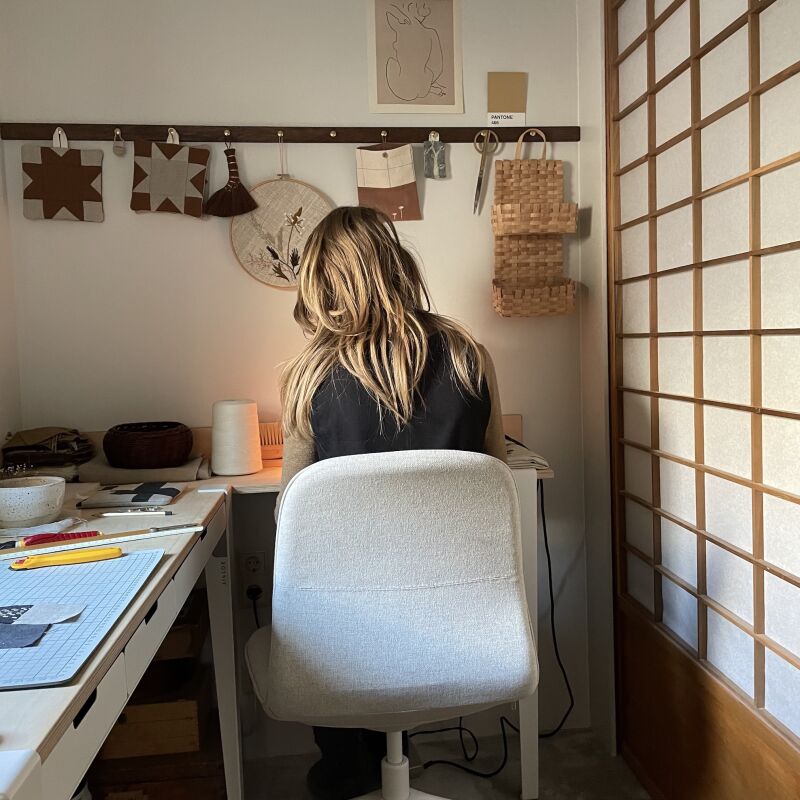Ahead, our latest post published in partnership with Realtor.com:
Peel-and-stick backsplash tile is an easy way to bring your kitchen or bathroom into this decade. Home improvement novices rejoice: These adhesive-backed designs mimic the look of tile and are extremely simple to install, because you don’t have to worry about dealing with mortar, grout, or any other messy substance required for traditional tiles.
The peel-and-stick version might be innovative, but if you’re not using the real thing, can your decor end up looking tacky? Basically, are peel-and-stick tiles any good? And more importantly, do peel-and-stick tiles last?
It’s a fine line to toe, which is why we’re here to help you weigh the benefits and drawbacks of peel-and-stick tile. Here’s what to know about peel-and-stick backsplash tile.

Types of peel-and-stick tile:
Peel-and-stick tile, like traditional tile, comes in a variety of materials. One way to choose the right tile for your home is to think about the material you want to feature and go from there.
Vinyl: Made with foam or plastic backing, this tile tends to be the cheapest on the market.
Metal: Yup, it’s real (lightweight) metal—usually aluminum—with a sticky adhesive.
Glass: This glossy style offers a more glamorous look.
Stone: Get the look of a real slate backsplash without having to deal with messy grout or mortar.
Gel: Faux ceramic or glass tiles are made from a 3D gel material.
Pros:
Peel-and-stick tile is ideal for people who can’t (or don’t want to) install permanent decor in their home. They’re “great for renters, provided the material is removable,” adds Karen Gray-Plaisted of KGP Design Solutions.
They’re also far less difficult to install than traditional tile, which requires hours of time and lots of materials (e.g., mortar, grout, tile spacers, etc.). All you have to do is measure the space, peel off the backing, and stick the tile sheet to the wall.
“If you’re looking for a quick update at a good price, a peel-and-stick backsplash fits the bill,” says Chiarilli.

Cons:
When it comes down to it, peel-and-stick backsplash tile isn’t the real deal, which, some decor experts believe, can make it look cheap.
“The thinnest peel-and-stick kits won’t give you any of the depth you’d see with real tile or brick,” says Chiarilli. Of course, you can pay for higher-quality kits (e.g., metal or glass), but the price can run up to $25 per square foot. “In this case, you’re not saving money on the tile,” Chiarilli says.
Another potential downside? The adhesive, especially on renter-friendly tiles that are meant to be removed, can wear down, especially in a kitchen where there’s a lot of moisture. Unless it has permanent adhesive, “anything peel-and-stick might fall off the wall or do damage to the surface behind it,” says Liz Toombs, owner of PDR Interiors.
And if you plan on moving in the near future, think twice about using peel-and-stick tile for a DIY backsplash. “Today’s buyers are savvier and much better at spotting cheap, quick fixes,” reports Cedric Stewart, a real estate agent and founder of the Entourage Residential Group with Keller Williams Capital Properties in Washington, DC. If potential buyers see a peel-and-stick backsplash, they might wonder about other corners you’ve cut in the home, he adds.

How to install peel-and-stick backsplash tile:
Luckily, most of the instructions for installation are in the name.
To apply peel-and-stick backsplash tiles, start with a clean surface. Use a cleaning spray or soap and water to remove any gunk from the wall and let it dry.
Measure the space carefully, and use a ruler and box cutter to cut the amount you’ll need for the space. Remove part of the back sheet and adhere the backsplash to the wall, pulling off more of the back sheet as you adhere the backsplash to the wall. Smooth the surface with the edge of a credit card or the ruler.
That’s it—no grout to clean up and no drying time.
Have you used peel-and-stick tile in your own place? Let us know in the comments.
For more tile ideas, search “tile” on our Lookbook. And for more reversible hacks, see Expert Advice: 23 Genius, Reversible, Budget-Friendly Hacks to Transform a Rental Apartment.
N.B.: This article by Jennifer Kelly Geddes has been syndicated from Realtor.com; for more ideas on home improvement from Realtor.com visit their News & Insights.






Have a Question or Comment About This Post?
Join the conversation (0)